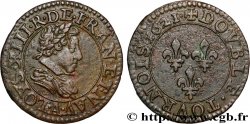Live auction - fme_941268 - LOUIS XIII Médaille, François de Bonne, duc de Lesdiguières et connétable de France
Чтобы принять участие в торгах, вы должны войти в систему и стать подтвержденным участником аукциона. Войдите, чтобы сделать ставку. Ваш аккаунт будет подтвержден в течение 48 часов. Не ждите до закрытия торгов, чтобы зарегистрироваться.Сделав ставку на данный товар, вы вступаете в юридическое соглашение на покупку выбранного товара и нажатием кнопки «Сделать ставку» подтверждаете принятие вами условий интернет-аукционов cgb.fr.
Ставка может бить сделана только в полном эквиваленте евро. Торги закроются согласно времени, указанному в описании товара, все ставки, сделанные после закрытия торгов, учитываться не будут. Не следует откладывать предложение вашей ставки до последнего момента, так как система может не успеть обработать вашу заявку, и ваша ставка не будет принята. Более детальную информацию вы найдёте здесь: FAQ по интернет-аукционам.
Все ставки победителей подлежат комиссии 18%.
Все ставки победителей подлежат комиссии 18%.
| Оценить : | 120 € |
| Цена : | 295 € |
| Максимальная предлагаемая цена : | 400 € |
| Конец торгов : | 20 August 2024 16:29:57 |
| Участников : | 5 Участников |
Тип Médaille, François de Bonne, duc de Lesdiguières et connétable de France
Дата: 1623
Металл: bronze
Диаметр: 48,50 mm
Ориентация осей монеты: 12 h.
Гравер DUPRÉ Guillaume (1576-1643)
Вес: 35,61 g.
Век: lisse
Пуансон: sans poinçon
Комментарии о состоянии
Patine hétérogène avec des taches noires d’oxydation. Présence de traces d’usure, avec quelques coups et rayures
Ссылки в каталоге: :
Лицевая сторона
Аверс: легенда: FRAN. A BONA D. DESDIGVIERES P. ET COMESTABILIS - 1623.
Аверс: описание: Buste cuirassé et drapé du Duc avec un col fraisé, tournée vers la droite, décoré de la croix de l’ordre du saint Esprit.
Обратная сторона
Реверс: легенда: GRADIENDO RO - BORE FLORET.
Реверс: Описание: Blason de Lesdiguières entouré du collier du Saint-Esprit et de l’ordre de Saint Michel, surmonté par une couronne ducale.
Реверс: перевод: Il s'épanouit avec une force qui doit grandir.
Комментарий
Petit noble dauphinois, François de Bonne (Saint-Bonnet, 1543 - Valence, 1626) accomplit une carrière hors norme. Il devient en effet Connétable de France, c'est-à-dire chef de toutes les armées françaises, et façonne un visage nouveau à la province du Dauphiné et à sa capitale, Grenoble..
A minor nobleman from Dauphiné, François de Bonne (Saint-Bonnet, 1543 - Valence, 1626) had an extraordinary career. He became Constable of France, meaning head of all French armies, and gave a new face to the province of Dauphiné and its capital, Grenoble.
A minor nobleman from Dauphiné, François de Bonne (Saint-Bonnet, 1543 - Valence, 1626) had an extraordinary career. He became Constable of France, meaning head of all French armies, and gave a new face to the province of Dauphiné and its capital, Grenoble.








 Cообщить об ошибке
Cообщить об ошибке Распечатать страницу
Распечатать страницу Отправить мой выбор
Отправить мой выбор Задать вопрос
Задать вопрос Consign / sell
Consign / sell
 Информация
Информация















